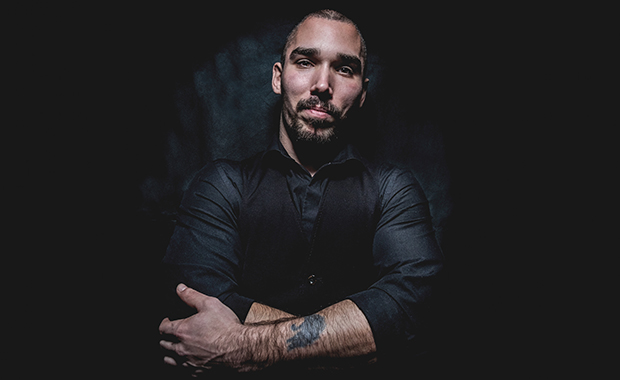Startups
8 Tips for Startups Wanting to Pitch to Large Organisations

At Addicted2Success we want to bring you worldwide game changers and success advice. With this in mind, I recently had the pleasure to interview the Managing Director of the Thankyou Group, Daniel Flynn. He is an amazing inspiration to talk to and he has so much wisdom. Daniel won the 2014 JCI 10 Young Outstanding People of the World and Victorian Young Australian of the Year 2014, as well as a host of other awards for his social enterprise startup, Thankyou Group.
His startup sells a range of products including, bottled water, food and body care. The profits go overseas to where they are needed, to help with safe access to water, as well as food and hygiene solutions. The code on the packaging of the products allows you to follow where your money goes via an app, as well as showing you the exact GPS location and notifying you when the project is complete.
In the below article, you will learn some amazing advice from Daniel that will help you with your own startup.
1. Choose the right one just like you choose your holiday spots
Make sure that you narrow the list of large corporations you wish to approach to ones that you know well, understand their business model, are a good brand fit for your startup and know they have the ability to deliver what you need them to. In the case of retailing, it might be that the organisation can sell multiple brands as opposed to some, which can only sell one.
2. Find out who the decision makers are
Sometimes the right decision maker is at a lower level of the organisation. The natural tendency is to want to go straight to the top of the organisation on everything. It can sometimes work to go to CEO level or head of a department, but you shouldn’t rule out going to someone at a lower category level who has the decision-making power as well.
It’s also important to research everything from their LinkedIn profiles to articles that have been written about them. If you’re pitching a really big concept you need to think to yourself, who’s the visionary of that brand?
3. Method of contact is crucial – we are all kids at heart
There are many ways to approach the key decision maker once you determine who the best person is. Daniel says that he often doesn’t send them a note on LinkedIn, but actually puts a call through to the organisation and speaks with a Personal Assistant or Executive Assistant, to let them know he is sending through a package to their respective manager without giving away any more information. He also mentions that he will be following up with a call.
The reason, why you should think of sending a package, is that key decision makers have 100’s of people contacting them every week via emails (too many to read), letters and packages. If you think about your own life, aren’t you like a kid on Christmas when a package arrives? A package has more intrigue, so consider sending your product sample to them via courier so they need to sign for it. All of this might seem like a lot of effort with the cost of couriers and packages, but it’s hard to cut through, especially with large corporations.
Once the organisation knows that there is a package is coming you then write a letter. If your handwriting is really good it’s a great idea to hand write it, if you’re like me, best to type the letter, print and sign it with a pen. The reason why you do this is that it’s personal. If you send someone a generic mail out you will probably find that they won’t respond to it. Make sure you send the letter by courier (not post) because it seems to have this magic sense of urgency.
The key when writing the letter is to make sure it connects with them. It can often take hours to write the letter and even rewrite the letter a few times, to make sure its short, sharp and succinct. In the letter, you ask them if you can catch up with them for 15 minutes. 15 minutes is the magic amount of time because it’s almost rude to say no to. If you ask for an hour then you can understand why they might not be able to catchup, but 15 minutes is a lot different.
So there may be some out there who want to supercharge this process, so listen to what Daniel did.
He once sent a one metre by half a metre wooden crate to a CEO of a big distributor. In the crate was a letter to the CEO requesting a 15-minute meeting. The funny part was that they hammered the crate shut and got their friend to wear a high visibility vest to look like a courier, and then deliver the crate with a hammer to the front reception of the organisation. Their thinking behind doing this was that they may not open it at first, but eventually they will wonder what’s inside and open it. This stunt ended up working for them and they got through to the CEO and had a response.
“Stand out and be remarkable. “
4. Make sure you pitch an opportunity not an idea
Daniel said they spent years going around presenting ideas, but what really changed the game was when they started presenting opportunities. The right time is when you actually have an opportunity not just an idea. You need to make it clear to them why you chose to see them before their competitors, and that you will most likely approach their competitors very soon.
To be successful in this you almost need to make them feel they are missing out without being too high pressure. If you take this approach and do it with good intention, you may even find that you will get a yes at the end of the pitch and not even have to wait for an answer!
When you present them a good opportunity, that’s really when you have the chance to partner with them. One lever, that you can use, is to pitch to multiple large originations and their competitors, at the same time. As a startup, you probably don’t have millions of dollars to impress them but what you do have is the ability to pitch to their competitor. Use that lever to present to two large organisations that are in competition with each other so that both of them know that one could say yes, and makes them want to be first.
If your startup is a social enterprise with a cause, this might get you some smiles but it ultimately comes down to the commercial offer and whether it stacks up. Remember that most large organisations already support some sort of charity so make sure you present an opportunity to them.
Even if you’re only 18 or 19 years old don’t be afraid of your age. A bit of naivety can actually help you stand out. At the same time, you should mention if you have any mentors or board members who are older to balance out your inexperience.
5. Presenting the perfect pitch – Be BOLD and OUTLANDISH
Don’t rush the process of coming up with your pitch. For Daniel, he learnt after 4 years of getting no’s from the supermarkets, to take his time and not to rush things. He then spent the next 12 months with his team, coming up with what they call the “ultimate pitch”.
In a great pitch, you need to cover off all the commercials, who you are, your concept, the future marketing plan and the demand for what you do. The most important factor of the pitch is that you want them to remember it so that it cuts through all the other pitches. When arranging your slides, consider having more images and keywords, and then have a few slides that are more detailed. The slides should back up your pitch but don’t walk in and read off your slides. Make sure that each pitch deck you do is tailored and it addresses their objectives, how they measure success and how they measure profit. It’s worth spending the time to make your pitch deck good because you may only get one shot at it.
Before you get into the room decide what it’s going to take for your pitch to cut through. Daniel often finds that he won’t know whether he is going to pull out his pitch deck until he is in the room and then he will go with his gut. He finds the greatest pitch is a conversation where you look them in the eye and take them on a journey. See the next paragraph for an example.
There were two architects pitching for a $200 million dollar development. One went into the boardroom looking like a slick salesman in a suit with all the flip charts etc. The second architect was an older guy who was dressed casually. After the first guy is finished with his flip charts, the second guy walks into the room with only a pencil. He then asks for a piece of paper and sticks it up on the wall. From there he tells the story of the building he wanted to create as he drew it. The decision was later reached and architect number two won the contract. Large organisations are used to getting pitched to all the time with slick, sharp presentations but what are you going to do to stand out?
Once your pitch is ready to present you need to think about how many people are going to be involved in the face-to-face pitch from both sides. The general rule of thumb is however many people you are meeting with, that’s how many people you should take. If you’re meeting 5 people you might take 3-5 people with you but turning up on your own could be strange. If you meet with one person from the company it’s going to be hard for them to sit back and relax when they are meeting a lot of new people for the first time. Too many people from your team can create an imbalance in the room. If you’re meeting 1 person you might meet 1 on 1 or maybe 2 on 1, but 3 is pushing it.
6. How to cut the decision time down using Social Media
If you want to be really clever and ensure you setup your pitch for success, consider using the power of Social Media like the Thankyou Group did. When you do your pitch the biggest question a large organisation will have is whether or not your product or services will actually sell. If it’s an established business doing the pitch, they could solve the problem by saying that they are going to put millions of dollars into marketing to make sure it sells. The way you can alleviate this problem, if you’re a startup, is through social media and getting your support base or followers to commit that they will buy the product or service if the large organisation agree to partner with you.
“ Social Media can help you prove demand.”
To be able to leverage social media and get your followers to show there is demand for what you’re doing, you need to have built a community first. You can do this through events, networking and posting really great content. Once you have some sort of community then you would typically do a mail out to your email list and tell them what you’re trying to do. In turn, they would then go to the large organisations Facebook wall, Twitter etc, and tell them they will buy your product or service if the partnership with your startup goes ahead.
“People are not consumers or customers they are part of your community.”
For the success junkies out there who want to supercharge this process, you could then reach out to celebrities and get them to do the same. If you approach a 100 you might get 10 to say yes. Use a similar strategy to the previous advice on approaching key decision makers, and write a hand written letter with an ask of a 15 minute meeting.
Some of you might be thinking that you need to have millions of people to make all this work.
When Daniel and his team pitched for 7-Eleven they only had about 12,000 in their community, and now they have over 130,000 in their community. Daniel thought initially that he would need a few hundred thousand supporters backing his 7-Eleven campaign for it to be successful. It ended up being just a few thousand people posting on Facebook, that convinced them the deal should proceed.
‘It doesn’t take a lot of people to convince someone of a good idea.”
7. Don’t let the decision time required discourage you
Often it can take 1-2 years to get a large organisation to say yes and start rolling out your products or service. This cycle is the same whether you’re a startup or a global company. Just because that’s the timeframe that it can take, it does not mean that you can’t get a decision sooner. A lot of it comes down to the terms of the deal you negotiate and how well you communicate the opportunity.
Daniel said an important lesson he learnt the day he did his first ever pitch, is that you can get a yes instantly. When he got his first yes for a large order, he didn’t have a company registered or any of the backend legal stuff completed! This is because, like most startups, he thought it would take months to get an answer. The key here is have faith and be prepared to deliver instantly.
Just getting a yes in the boardroom is still not the final hurdle though. You need to get the actual roll out to occur and this can also take some time. There are still plenty of examples though when this can happen within a month like it did for Daniel after he got a yes from two of the Largest Australian Supermarkets. The caveat for Daniel on having such a fast delivery to market was that he spent 5 years beforehand, trying to get them into the supermarkets. It’s through an utter persistence and a belief in what they were doing, that made it happen.
8. Dealing with failure and no’s – Persistence pays off
When you’re a startup it’s a pretty big call to think you will get the pitch right the first time. Getting a no to some, or even all of your pitches, is a reality. At the time you get a no, you can often feel like you want to give up and that you don’t really need the support of that large organisation anyway. You can easily say a lot of things to yourself because there is a lot of emotion involved. If your team is strong you will unite together and learn from the failure. Ask yourself, why didn’t the pitch work? This process of failing multiple times can really help to refine your startup and your process for future pitches.
“Your failures are your lessons learned which become your road to success.”
If you get a no it’s worth going back a second time later on, with a different offering. When you fundamentally believe that they are the right fit for your startup and there is a benefit for them, you don’t stop. As you follow up later on, every contact is a pitch and you want them to feel that they missed out and you’re having massive success. Daniel’s team has worked on some deals with large organisations for 5 years and never got a result.
All of this persistence ended up paying off for Daniel because they eventually came up with the ultimate pitch which will go down in history. You can watch it below on Youtube right now.
The one business book that Daniel recommends you read is called “Do Purpose by David Hieatt”.
If you would like to continue to follow Daniel’s story and his company, then you can visit thankyou.co
Shift Your Mindset
10 Powerful Traits Every True Thought Leader Possesses
In a world saturated with noise, thought leadership is the quiet power that shifts paradigms.

Thought leadership is more than just having strong opinions. It’s the ability to influence, inspire, and guide others by sharing original insights, innovative ideas, and deep domain expertise. It’s about sparking change, not just talking about it. (more…)
Startups
The Young Man’s Guide to Creativity: 10 Daily Habits to Improve Your Creative Mind
10 daily habits you can put into practice right now to improve your creativity

When I was 22 years old, I became a Top Writer on Medium.
It’s not an easy path. I lived in the Philippines and had never received a penny after writing over 100 digital articles. But I treated it like practice. If I couldn’t get other people to read my work for free, why would they trust me? (more…)
Startups
If You’re Not Reinventing Yourself, You’re Falling Behind! Here’s What To Do
Reinvention is the secret weapon of high performers.

Reinvention is the secret weapon of high performers.
Most careers follow a predictable script. You start at the bottom, climb the ranks, and eventually settle into something resembling stability. But the people who make the biggest impact, the ones who don’t just play the game but change it, break that script. They evolve. They shift. They reinvent. (more…)
Startups
The Silent Killer of Startups: This Might Be Draining Your Profits
If you are careless in managing your inventory, it can lead to a sudden depletion in cash flow

There are several issues in a startup, but if you are really careless in managing your inventory, it can lead to a sudden depletion in cash flow. Old, broken, and misplaced stock wastes space and profits. If inventories and storage aren’t managed properly, it hardly ever works.
-

 Shift Your Mindset4 weeks ago
Shift Your Mindset4 weeks ago11 E’s That Define Every Great Leader And Why Most People Miss Them
-

 Did You Know3 weeks ago
Did You Know3 weeks agoThe Success Patterns You Inherited (And Didn’t Notice)
-

 Entrepreneurs3 weeks ago
Entrepreneurs3 weeks agoThe Essential Skills Every Entrepreneur Needs In 2026
-

 Business4 weeks ago
Business4 weeks agoThe Hidden Money Pit in Your Operations (and How to Use It)
-

 Change Your Mindset2 weeks ago
Change Your Mindset2 weeks agoHow to Turn Your Mind Into Your Greatest Asset (Instead of Your Enemy)
-

 Change Your Mindset2 weeks ago
Change Your Mindset2 weeks agoThe Silent Skill That Makes People Respect You Instantly
-

 Life1 week ago
Life1 week ago10 Research-Backed Steps to Create Real Change This New Year
-

 Tech1 week ago
Tech1 week agoWhat’s in a Name? How to Get Your Domain Right

























